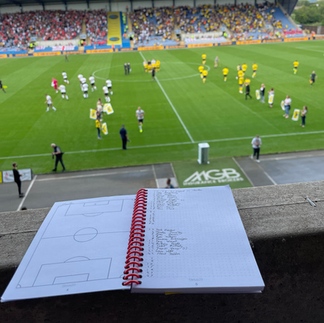As coaches of coaches, we commonly arrive at the topic of improving planning and reflections for the benefits of the team.
One resource that we developed after supporting football coaches and managers was the Strive25 Football Session Planner.
Coaches and managers wanted freedom on each page to plan and a way to find their notes easily to reflect.
The consistent questions focused on having a space for coaches and managers to make notes that they could look back on throughout the season to inform better coaching and performances. Our answer was to combine the concept we used for our journals with common football planners. You may have the lined notebook, scrap paper scrunched in your pocket or a notepad with football pitches on.
All of these methods work fine for drawing up sessions however what happens when you lose the scrap paper or forget what page on the notebook that great session was on from last month. You spend time looking on bookshelves, in draws, pockets and bags. This is not an effective system of work and could be at the detriment of your team.
Our session planner structure allows you to tag anything that is relevant to your planning and reflections in the contents page. This makes it much easier for you to find the reflections when actioning changes for future sessions.
On the contents page, you can add in any title, tag or reference that you need followed by the page number (7) or page range (7-10). That way, when you need to find the session from 6 weeks ago, you can easily look back at the tags and find the corresponding page.
(Example)
Creating overloads: 11,15, 21
Building from back: 17-20
Transitions: 9, 13,
The beauty of this structure is you can add multiple page numbers to the same tag if you have the same focus for multiple sessions.
For example, a football coach we support has been working on developing fullbacks within his full squad practices. He has created a tag on his contents page that is titled Fullbacks. Every time he delivers a session that impacts the fullbacks he will add the page number to his contents page.
This structure doesn’t change your coaching style, principles or methods however it does allow you more freedom to use each page how you like. Using all of your experience and knowledge to fill the pages for the benefits of your team rather than being limited to lines and boxes.
You can also see on the dotted left hand page that there is space for notes and reflections. By writing your thoughts and observations down within this structure, you can look back and be informed by previous sessions.
This will make you a much more impactful coach, for the benefit of your team.
If you want to see how else you can improve your reflection, take a look at our
Tips for reflection blog.














Comments